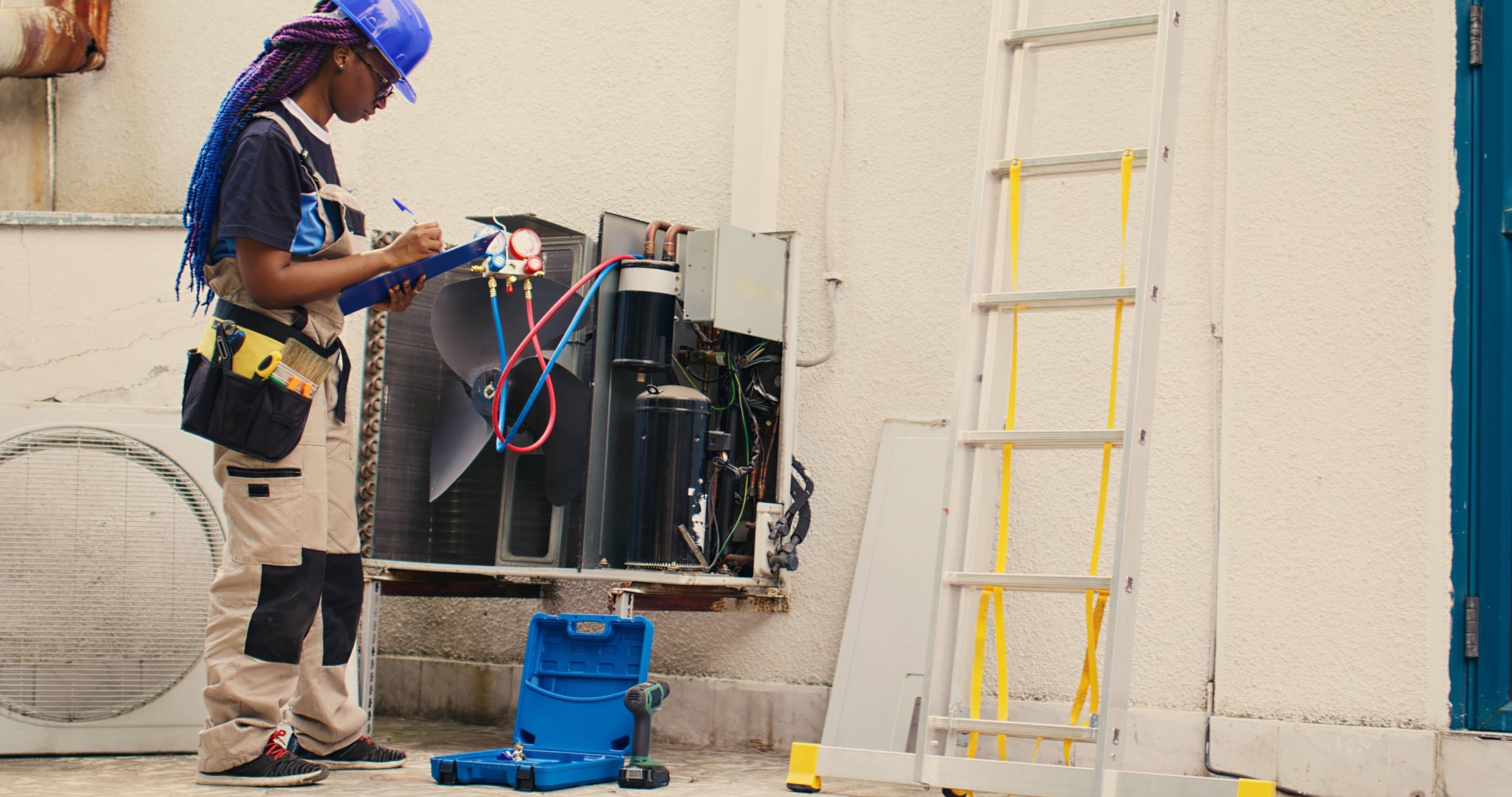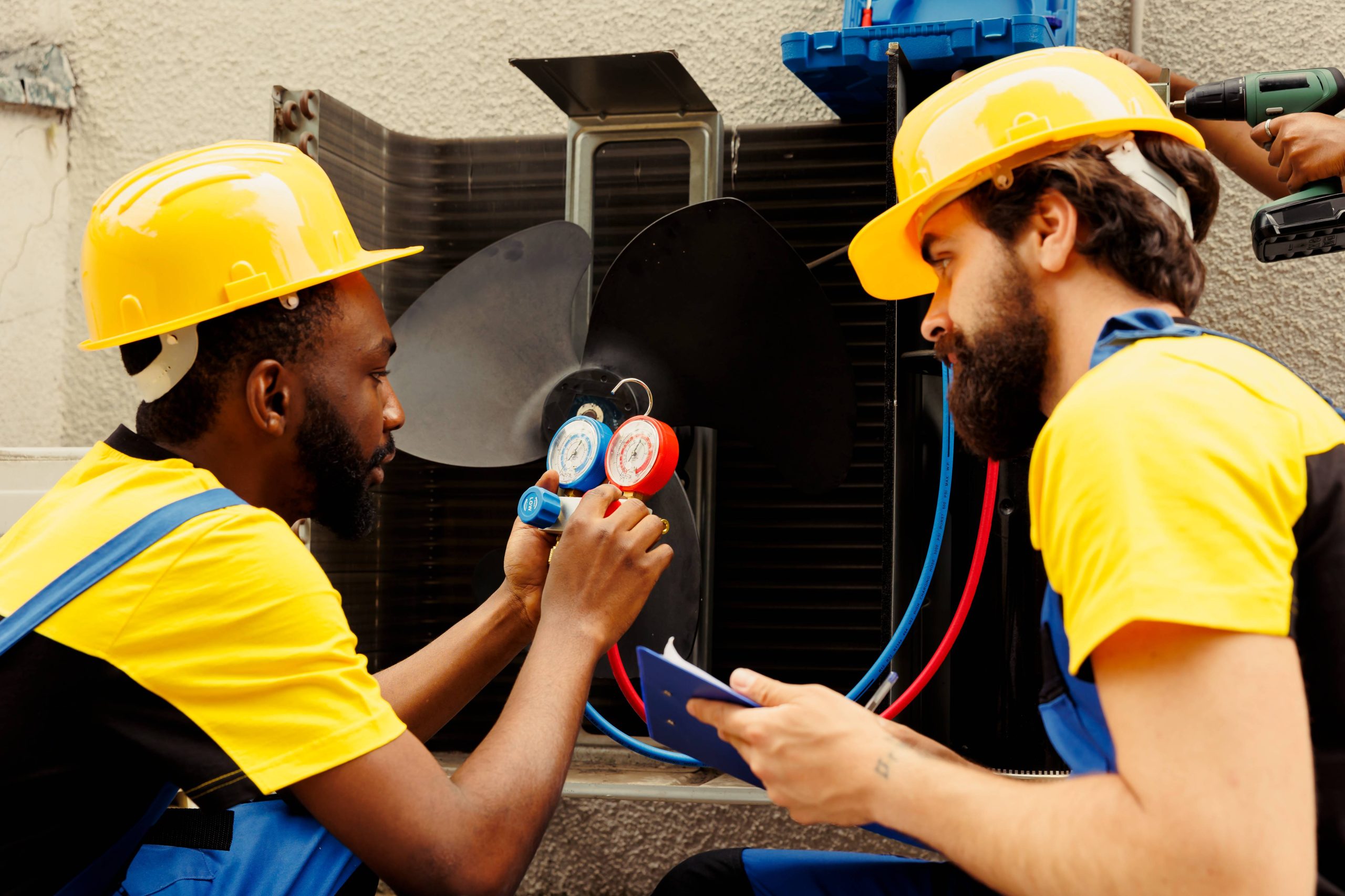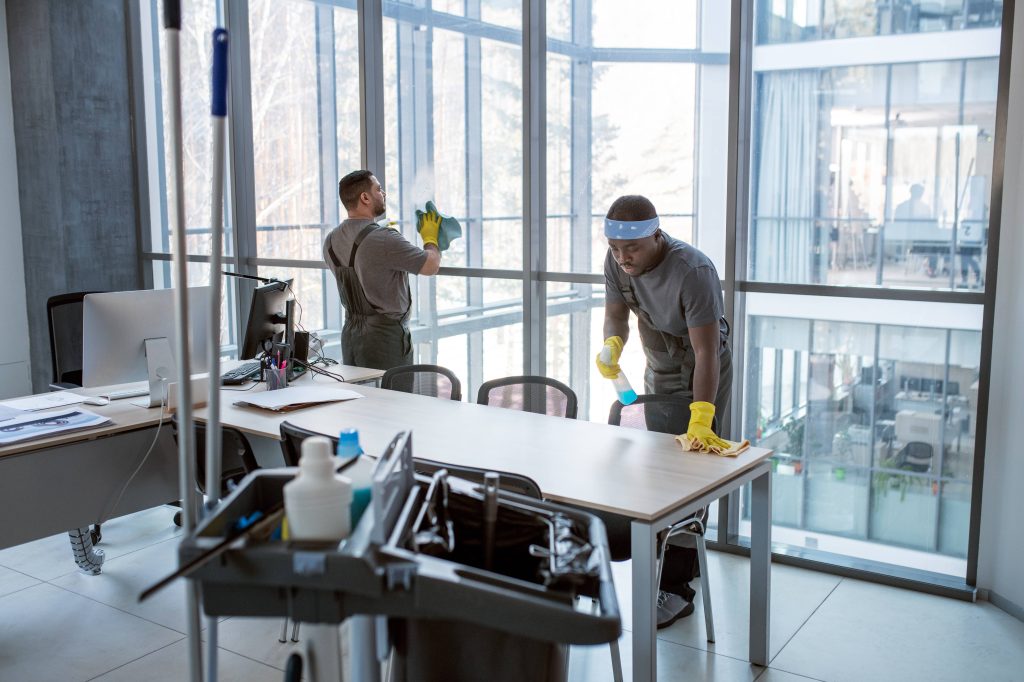Buildings are substantial investments, and maintaining them efficiently is critical to maximizing their lifespan and ensuring a safe, comfortable environment for occupants.
However, many building owners and facility managers often overlook the importance of preventive maintenance, opting instead for reactive approaches that only address issues when they become problematic.
This strategy, while seemingly cost-effective in the short term, can lead to expensive repairs, operational disruptions, and a shorter building lifespan.
Preventive building maintenance, on the other hand, is a proactive approach that focuses on regular inspections, routine upkeep, and timely repairs to prevent minor issues from escalating into major problems.
This comprehensive guide will explore the essential aspects of preventive building maintenance, detailing how it can save costs, extend the lifespan of your building, and enhance overall functionality.
What is Preventive Building Maintenance?
Preventive building maintenance is a proactive approach to maintaining a property, focusing on regularly scheduled inspections and upkeep activities that keep a building’s systems and structures in optimal condition.
The goal is to identify potential issues early, perform necessary repairs, and ensure that all building components function efficiently. This strategy minimizes the likelihood of unexpected breakdowns, reduces repair costs, and extends the building’s lifespan by preventing the deterioration of its essential systems and structures.
Preventive maintenance involves various tasks, including inspecting roofs, HVAC systems, plumbing, electrical systems, and structural elements. It also includes routine tasks like cleaning, painting, lubricating moving parts, and replacing worn-out components.
By adhering to a preventive maintenance schedule, building owners can ensure that their property remains safe, comfortable, and operationally efficient, ultimately protecting their investment.
Why Prioritize Preventive Building Maintenance?
Prioritizing preventive maintenance offers numerous advantages that go beyond merely avoiding the inconveniences of unexpected repairs.
A well-maintained building operates more efficiently, with reduced energy consumption and lower operational costs. Additionally, preventive maintenance enhances the safety of the building, reduces the likelihood of accidents, and ensures compliance with building codes and regulations.
Financially, preventive maintenance is a sound investment. While it may involve upfront costs, these are significantly lower than the expenses incurred from major repairs or replacements resulting from neglect.
Moreover, a well-maintained building has a longer lifespan, meaning owners can delay the substantial costs associated with major renovations or the need to replace building systems prematurely.
The Importance of Preventive Building Maintenance
-
Cost Savings
One of the most significant advantages of preventive building maintenance is the cost savings it offers.
By regularly inspecting and maintaining a building, potential issues can be detected early, allowing for minor repairs rather than major overhauls.
For example, identifying a small crack in the foundation during a routine inspection can prevent it from expanding into a major structural issue that would require extensive repairs.
Preventive maintenance also helps in reducing energy costs. Well-maintained systems, such as HVAC and lighting, operate more efficiently, consuming less energy and lowering utility bills.
Furthermore, by keeping the building in good condition, owners can avoid the high costs associated with emergency repairs, which often come with premium charges for labor and materials.
Over time, the cumulative savings from preventive maintenance can be substantial, making it a cost-effective strategy for building management.
-
Extended Lifespan of Building Components
Every building comprises various components, such as the roof, HVAC systems, electrical systems, plumbing, and structural elements, each with its own lifespan and maintenance needs. Regular preventive maintenance ensures that these components function efficiently and last as long as possible.
For instance, routine roof inspections and repairs can prevent leaks and structural damage, which, if left unaddressed, could lead to significant repairs or even a complete roof replacement.
Similarly, regular servicing of HVAC systems ensures they operate efficiently, reducing energy consumption and preventing breakdowns that could disrupt the comfort of occupants.
By keeping these systems in optimal condition, building owners can avoid costly emergency repairs and extend the lifespan of their building’s critical components.
Over time, the cost savings from avoiding major repairs and replacements can be substantial, making preventive maintenance a financially wise strategy.
-
Enhanced Safety and Compliance
Safety is a paramount concern in building management, and preventive maintenance plays a critical role in ensuring that a building remains safe for its occupants.
Regular inspections and maintenance help identify potential hazards, such as faulty electrical wiring, structural weaknesses, or malfunctioning safety systems, before they pose a risk to occupants.
Addressing these issues promptly not only prevents accidents but also ensures compliance with safety regulations and building codes.
Moreover, preventive maintenance helps in maintaining the building’s compliance with various regulations and standards.
For example, regular fire safety inspections and maintenance of fire suppression systems ensure that the building meets fire safety regulations. Non-compliance can result in hefty fines, legal liabilities, or even the closure of the building.
By staying proactive with maintenance, building owners can avoid these risks and ensure that their property remains safe and compliant.
-
Improved Occupant Satisfaction and Productivity
For property managers and owners, tenant satisfaction is crucial for maintaining high occupancy rates and reducing turnover. A well-maintained building creates a positive living or working environment, which directly impacts tenant satisfaction.
Regular maintenance ensures that common areas, facilities, and building systems are always in good working condition, preventing disruptions that could inconvenience tenants.
When tenants see that their landlord or property manager is attentive to maintenance and upkeep, they are more likely to feel valued and respected, leading to higher satisfaction levels.
Satisfied tenants are more likely to renew their leases, reducing the costs and effort associated with finding new tenants.
In a real estate market, a well-maintained building can be a significant factor in attracting and retaining tenants, making preventive maintenance an essential part of property management.

Key Components of Preventive Building Maintenance
Key components of preventive building maintenance encompass a range of tasks designed to keep a property in optimal condition, ensuring its longevity and functionality. These components include:
-
Routine Inspections
Routine inspections are the cornerstone of preventive maintenance. These inspections should cover all major systems and components of the building, including HVAC, plumbing, electrical, roofing, and structural elements. The frequency of inspections depends on the system or component being evaluated.
For example, HVAC systems might require seasonal inspections, while roofing might only need annual checks.
-
Scheduled Servicing
Scheduled servicing involves regular maintenance tasks that are performed on a set schedule, such as changing filters in HVAC systems, lubricating moving parts in machinery, or cleaning gutters.
These tasks help to keep systems running smoothly and prevent minor issues from escalating into major problems.
-
Predictive Maintenance
Predictive maintenance uses advanced technologies such as sensors, data analytics, and machine learning to predict when a system or component is likely to fail.
By analyzing data from regular operations, predictive maintenance can identify patterns that indicate a potential failure, allowing maintenance teams to intervene before a breakdown occurs.
This approach is particularly useful for critical systems where downtime can be costly or dangerous.
-
Record Keeping
Maintaining detailed records of all inspections, repairs, and maintenance activities is essential for effective preventive maintenance.
These records provide a history of the building’s condition, helping to identify recurring issues and inform future maintenance decisions. They also serve as documentation for compliance with regulatory requirements.
Strategies for Effective Preventive Building Maintenance
Implementing an effective preventive maintenance program requires careful planning and execution. Below are some key strategies to consider:
-
Develop a Maintenance Plan
An effective preventive maintenance program begins with a comprehensive maintenance plan. This plan should outline the scope of the maintenance activities, including which systems and components will be covered, the frequency of inspections and servicing, and the responsibilities of the maintenance team.
The plan should also include a budget for maintenance activities, ensuring that sufficient resources are allocated to keep the building in good condition.
-
Prioritize Critical Systems
Not all building systems are equally critical. When developing a maintenance plan, it is important to prioritize systems that are essential for the safety and functionality of the building.
For example, life safety systems such as fire alarms and sprinklers should be inspected and tested more frequently than non-critical systems.
-
Train and Equip Maintenance Staff
The effectiveness of a preventive maintenance program depends on the skills and knowledge of the maintenance staff.
Regular training should be provided to ensure that staff are familiar with the latest maintenance techniques and technologies.
In addition, the maintenance team should be equipped with the tools and resources needed to carry out their tasks effectively.
-
Utilize Technology
Technology plays a crucial role in modern preventive maintenance. Building management systems (BMS) can automate many aspects of maintenance, such as scheduling inspections, monitoring system performance, and generating alerts when issues are detected.
Additionally, mobile apps and cloud-based platforms allow maintenance teams to access records, update work orders, and communicate in real time, improving efficiency and coordination.
-
Review and Adjust the Maintenance Plan
A preventive maintenance plan should not be static. It should be reviewed regularly to assess its effectiveness and make adjustments as needed.
For example, if a particular system requires more frequent repairs than expected, it may need to be inspected more often or replaced with a more reliable alternative.
Regular reviews also provide an opportunity to incorporate feedback from occupants and maintenance staff, ensuring that the plan continues to meet the building’s needs.
Benefits of Preventive Building Maintenance
Preventive building maintenance offers a multitude of benefits that go beyond simply keeping a property clean and functional. The following are the major benefits:
-
Reduced Downtime
Preventive maintenance reduces the likelihood of unexpected system failures, which can lead to costly downtime.
For businesses, this means fewer disruptions to operations and a more consistent level of service.
-
Lower Energy Costs
Well-maintained systems operate more efficiently, consuming less energy and reducing utility bills.
For example, regularly cleaning and tuning HVAC systems can improve their efficiency, leading to significant energy savings.
-
Increased Property Value
A well-maintained building is more attractive to potential buyers or tenants, increasing its market value.
Preventive maintenance helps to preserve the building’s structural integrity and aesthetic appeal, making it a valuable asset in the long term.
-
Sustainability and Environmental Benefits
Preventive maintenance supports sustainability by extending the lifespan of building components, reducing waste, and minimizing the need for new materials.
Additionally, maintaining energy-efficient systems reduces the building’s carbon footprint, contributing to environmental sustainability.
-
Enhanced Reputation
A well-maintained building reflects positively on its owner or manager, enhancing its reputation among tenants, clients, and the community.
This can lead to increased tenant retention, higher occupancy rates, and a stronger market position.

How to Implement a Preventive Building Maintenance Program?
Implementing a successful preventive maintenance program requires careful planning and execution. Here are the steps to get started:
-
Audit Your Building
Begin by conducting a comprehensive audit of your building. This involves assessing the current condition of all systems and structures, identifying any existing issues, and determining the age and expected lifespan of key components.
-
Develop a Maintenance Plan
Based on the audit, develop a maintenance plan that outlines the tasks that need to be performed, the frequency of these tasks, and the resources required.
The plan should prioritize critical systems that are essential to the building’s operation and safety.
-
Schedule Regular Inspections and Maintenance
Establish a schedule for regular inspections and routine maintenance tasks. Ensure that this schedule is adhered to strictly, with adjustments made as needed based on the findings of inspections and the evolving needs of the building.
-
Train Maintenance Staff
Ensure that your maintenance staff is properly trained and equipped to carry out the necessary tasks. This includes training on safety procedures, the use of maintenance tools and equipment, and the identification of potential issues during inspections.
-
Monitor and Adjust:
Continuously monitor the effectiveness of your preventive maintenance program. Use the data collected from inspections and repairs to make informed decisions about adjusting the maintenance schedule, upgrading systems, or making other improvements.
FAQs
How do I prioritize preventive maintenance activities?
To prioritize preventive maintenance work, rank assets based on their criticality for production, safety, and compliance, as well as the potential cost of repair or replacement. In addition, consider historical data and manufacturer recommendations when building out a schedule.
What are the risks of neglecting preventive maintenance?
Neglecting preventive maintenance can lead to equipment failures, increased downtime, higher repair costs, reduced equipment lifespan, and safety hazards. Additionally, teams risk safety incidents and decreased productivity due to malfunctioning equipment.
What are some challenges to implementing preventive maintenance strategies?
Challenges to implementing preventive maintenance include resource allocation, data accuracy, resistance to change, and finding the right balance between proactive maintenance and reactive maintenance. Additionally, selecting and utilizing the appropriate tools and software to execute a proper preventive maintenance strategy can be a significant hurdle.
What is the difference between preventive and reactive maintenance?
Preventive maintenance involves scheduled, routine tasks aimed at preventing equipment failure, while reactive maintenance focuses on restoring equipment to working condition after unexpected failures occur.
What is the PM to breakdown ratio?
While there’s no perfect ratio of preventive to reactive maintenance, experts recommend adopting an 80/20 approach (based loosely on the Pareto Principle), where 80% of maintenance activities focus on proactive work and the remaining 20% on reactive work.
Conclusion
Preventive building maintenance is a smart investment that pays off in multiple ways. By focusing on regular inspections, servicing, and the use of advanced technologies, building owners and managers can extend the lifespan of their properties, reduce costs, and create a safe, comfortable environment for occupants.
A well-executed preventive maintenance plan not only preserves the value of the building but also contributes to its long-term success.
Nowadays, the benefits of preventive maintenance are clear—it’s a strategy that no building owner can afford to overlook.



